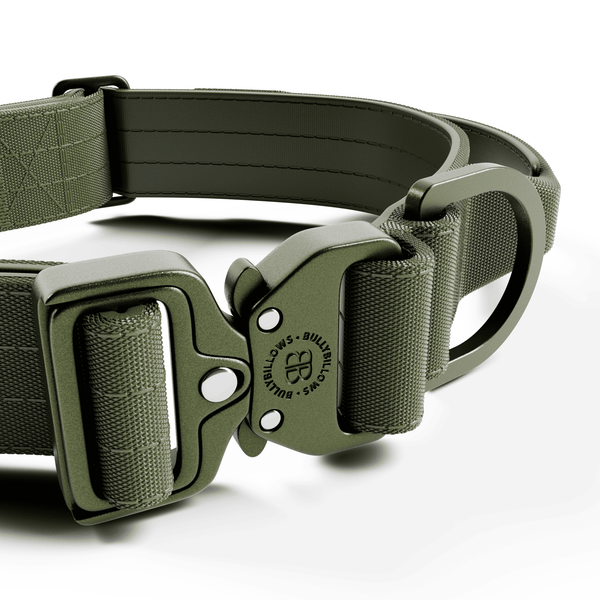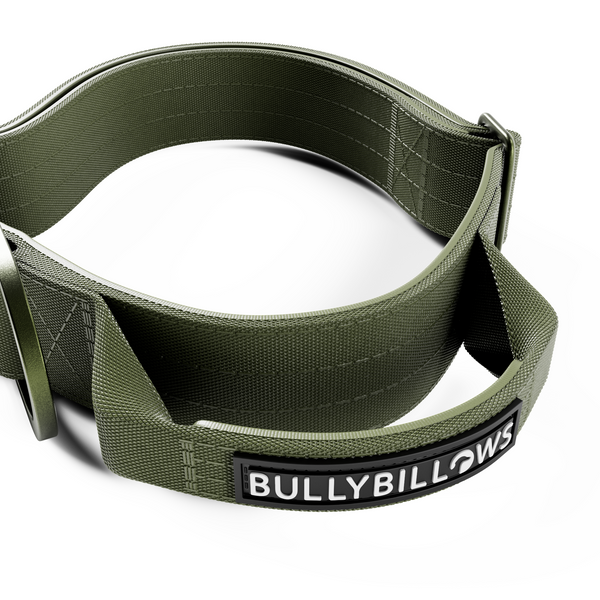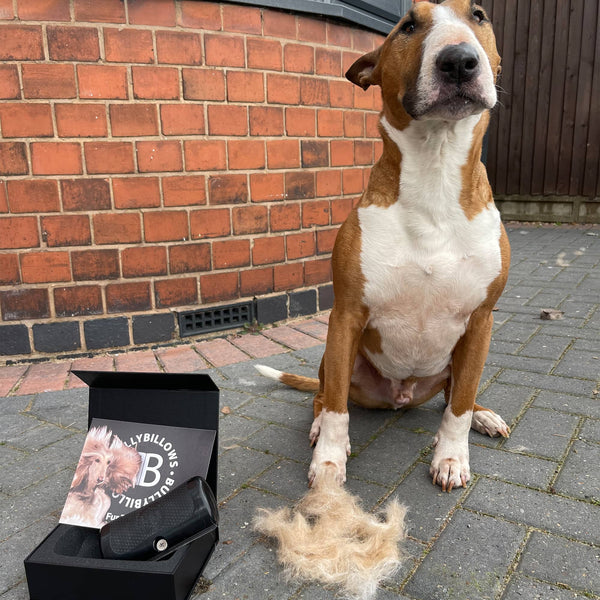Some people want a dog to cuddle on the couch with or enjoy a slow walk and a pub lunch with on lazy Sundays. Other people want a dog that’s going to join them on big adventures and high-energy activities like mountain hikes and travelling.
If you do want your canine companion to have a specific activity level to suit your plans or your lifestyle, it’s important to understand exercise needs by breed.
If you choose a dog that needs a lot of exercise but you don’t have the time or inclination to provide this, for example, neither of you will enjoy your time together to the fullest. Lack of enough exercise can lead to problems like behavioural issues and obesity.
On the other hand, if you live a super active lifestyle but choose a dog that can’t keep up with your physical demands, you run the risk of them being pretty unhappy or even suffering from health issues.
Keep reading to explore which dogs need the least exercise and vice versa so you can find your perfect match.
We’ll also take you through the pros and cons of the most low-exercise dogs and high-exercise breeds so you can make a more informed decision when finding a four-legged friend.
Dog exercise requirements by breed
Naturally, how much activity your pooch can do will vary depending on things like age, health and physical ability.
For example, senior dogs and puppies will have different activity levels to adult dogs. Puppies are recommended to have five minutes of exercise per month of age, while elderly dogs may require 30-60 minutes or even less.
The temperature and other weather conditions will also play a part—in a heatwave, even the most active breeds will need to take more time to chill, for example.
Labrador Retriever
The Labrador Retriever is a bouncy, playful breed that’s often bursting with energy and likes to be active. They should have around 1-1.5 hours of exercise each day, split up into different sessions to make their forms of exercise fun and diverse.
They love running, playing games and swimming, so they need more than just a stroll around the block. They also enjoy agility training as it feels a lot more like playtime to them.
Border Collie
The Border Collie is one of the most active, high-energy dog breeds so requires more exercise than average. It’s recommended that a Border Collie should have at least 2 hours of exercise across the day, more if you feel there is more excess energy to burn.
They love running, chasing, playing fetch and anything that requires agility. Due to their natural herding instincts, they also enjoy obedience training activities.
Training is super important with this breed because letting them run off-lead will help keep their physical activity levels up but they need good recall and off-lead behaviour.
English Cocker Spaniel
While English Cocker Spaniels aren’t top of the high exercise list, they are still a pretty active and energetic breed that needs at least 1 hour of activity across the day. They love walking, swimming and interactive games as well as off-lead exploring due to their natural hunting instincts.
To satisfy these hunting instincts, you could play sniff training with your Cocker. This involves hiding their toy or some of their favourite treats and setting them free to go and find them.
Just make sure they’re wearing an engraved dog ID tag with your details on it so if they get carried away and you can’t find them, somebody can return them to you more easily. This applies to any dog breed whenever they’re off-lead in public.
In fact, attaching an engraved ID tag with your contact details to your dog’s collar is now a legal requirement in the UK.
Cockapoo
Cockapoos are a mix of Cocker Spaniels and Poodles, both of which are energetic breeds. This means Cockapoos are cute little balls of energy that require at least 1 hour of exercise a day to keep them fit, healthy and satisfied.
They’re an agile, intelligent breed so things like obedience training, obstacle courses, agility games and fetch are all great ways to burn off energy and keep your Cockapoo stimulated.
While your Cockapoo is in training, we recommend trying something like the No Pull TRI-Harness® for small breeds. This design won’t restrict natural movement but will help you and your pooch learn how to contain their bouncy playfulness on lead walks.
Golden Retriever
The Golden Retriever is another extremely active breed with high levels of energy. This means they need at least 2 hours of exercise spread across each day with a variety of exercise types like walks, swimming, running and playing interactively with you and other dogs.
Golden Retrievers love to jog alongside their owners and join them on lengthy walks so they’re great running and hiking partners. Check our double-ended dog leads which can be configured in eight different ways, including giving you the benefit of hands-free control when you’re on the move.
We recommend using this lead in conjunction with one of our TRI-Harnesses as it can be attached to the front and back D-Loops to assist in training and help eliminate pulling while you jog or run.
German Shepherd
The German Shepherd is an energetic, intelligent breed that requires a generous amount of physical and mental exercise. Around 1.5-2 hours of activity spread across each day is recommended but you may even find your German Shep requires more.
Take your German Shepherd on long walks, hikes and jogs with you because they’ve also got the stamina to match their energy levels.
Obedience training, protection training and scent (or sniff) training are great ways to burn a German Shepherd’s excess energy in a way that will stimulate and fulfil their natural instincts.
Staffordshire Bull Terrier
The Staffordshire Bull Terrier is a strong, muscular and energetic breed that needs and loves to have lots of opportunities for physical activity and stimulation throughout the day. It’s recommended that this breed needs around 1.5 hours of exercise each day.
Staffordshire Bull Terriers enjoy lengthy walks so this can be divided into two long walks or one long walk and various other physical activities. They love to run around off-lead, provided they are safe and well-trained.
Springer Spaniel
Springer Spaniels are a bouncy, high-energy breed that certainly lives up to the ‘spring’ in their name. This breed needs around 1.5-2 hours of exercise per day, spread across a variety of activities like walking, running off-lead, swimming, jogging alongside you and playing interactive games like fetch.
Top tip: if you do take your Springer Spaniel swimming, make sure you’re stocked up on our Dog Shampoo, Conditioner & Cologne first to have them clean and smelling fresh again in no time. Take your pick from six tempting scents:
- Mango & Coconut
- Tea Tree
- Mint & Hemp
- Strawberry
- Chamomile
- Baby Powder
Jack Russell Terrier
Jack Russells may be small in size and stature but make no mistake, they’re still bursting with bags of energy and curiosity. This small but mighty breed needs around 1-2 hours of exercise per day and loves to partake in brisk walks, running off-lead and plenty of playtime.
Even though Jack Russells are energetic, it’s important to remember that they’re still a small breed with short legs. This means long, strenuous hikes aren’t their bag. They prefer shorter, more regular bursts of activity.
Labradoodle
If you’ve ever seen a labradoodle bounding around, you’ll know what we mean when we say they’re one of the most playful and energetic breeds around. They’re one of the easier breeds to train but their energy levels are high, which is why they need a good 1-2 hours of exercise every day to keep them calm and satisfied.
Labradoodles love walking, jogging, swimming and playing with other dogs and their owners.
Which dogs need the least exercise?
Here are some low-exercise dog breeds for busy owners or dog lovers who want the companionship of a pet but aren’t able to provide hours of exercise a day.
- Dachshund
- Greyhound
- French Bulldog
- Pug
- Shih Tzu
- Basset Hound
- Chihuahua
- Cavalier King Charles Spaniel
- Great Dane
- Bullmastiff
Pros and cons of low-exercise dogs
Many (but not all) of the dog breeds that need the least exercise are small or toy breeds, like Pugs, Shih Tzus and Chihuahuas. What’s great about this is that it’s easier for them to get exercise at home either playing around the house or running around the garden.
This means you don’t have to find time to take them out on walks multiple times a day.
Plus, if you lead a busy life or you’re not able to exercise a lot yourself, dogs that are happier to curl up at home more regularly are ideal.
The main downside of low-exercise breeds is that if you do live a high-energy lifestyle yourself, it can be restricting when your pooch can’t join along with you.
Which dogs need the most exercise?
Looking for a dog breed that will put you through your paces and keep up with an active, adventurous lifestyle? Below are some high-exercise breeds for you to consider.
- Springer Spaniel
- German Shepherd
- Dalmatian
- Labrador Retriever and Golden Retriever
- Boxer
- Border Collie
- Weimaraner
- Husky
- Afghan Hound
- Miniature Poodle
- Pointer
Pros and cons of high-exercise dogs
One of the benefits of high-energy, high-exercise dogs is that they enjoy running around off-lead and can entertain themselves more independently. However, if you’re letting your dog off their lead in public places, you need to make sure they have good recall and that they will behave appropriately if they come into contact with people or other dogs.
While your energetic breed is still in training for off-lead activities, we recommend trying something like the Billowthane® Recall Lead. This is a 10-metre lead designed to give the dog more freedom while still maintaining control for the owner. It’s extremely durable and 100% waterproof so perfect for training in all conditions. It’s suitable for any breed, age or size.
Another great thing about dog breeds that require the most exercise is that they make awesome adventure buddies. When your pet can keep up with things like jogging, hiking and swimming, you won’t have to leave them behind as much as smaller, low-exercise breeds.
Of course, it works both ways—if you are going to choose a high-exercise breed, you need to make sure you’ve got the time and the ability to give them enough activity every single day, not just when it suits your plans.
Shop all of your dog walking essentials here at BullyBillows
We hope you’ve found our guide to dog exercise requirements by breed helpful and that you’ve learned more about how much activity some popular pooches need to be happy and healthy.
Ready to head out for some exercise with your canine companion? Make sure you’re stocked up on the essentials first. We have a whole host of high-quality leads, collars, and other dog walking gear, from treat pouches to comfortable safety muzzles—we’ve got you covered.
For more news, advice and product buying guides check out the rest of our blog…
Tips for Stress-Free Dog Walks | The Most Intelligent Dog Breeds | Guide to Different Breeds of Spaniels































































